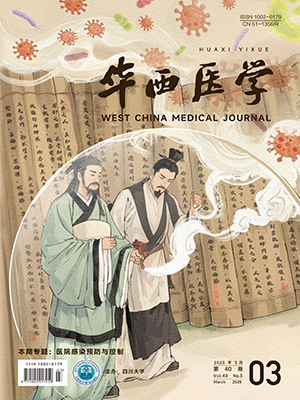| 1. |
DeLeve LD, Valla DC, Garcia-Tsao G, et al. Vascular disorders of the liver. Hepatology, 2009, 49(5): 1729-1764.
|
| 2. |
Seijo S, Plessier A, Hoekstra J, et al. Good long-term outcome of Budd-Chiari syndrome with a step-wise management. Hepatology, 2013, 57(5): 1962-1968.
|
| 3. |
Hayek G, Ronot M, Plessier A, et al. Long-term outcome and analysis of dysfunction of transjugular intrahepatic portosystemic shunt placement in chronic primary Budd-Chiari syndrome. Radiology, 2017, 283(1): 280-292.
|
| 4. |
Mancuso A. Budd-Chiari syndrome in the west and the east: same syndrome, different diseases. Liver Int, 2019, 39(12): 2417.
|
| 5. |
Shukla A, Shreshtha A, Mukund A, et al. Budd-Chiari syndrome: consensus guidance of the Asian Pacific Association for the study of the liver (APASL). Hepatol Int, 2021, 15(3): 531-567.
|
| 6. |
Pugh RN, Murray-Lyon IM, Dawson JL, et al. Transection of the oesophagus for bleeding oesophageal varices. Br J Surg, 1973, 60(8): 646-649.
|
| 7. |
Malinchoc M, Kamath PS, Gordon FD, et al. A model to predict poor survival in patients undergoing transjugular intrahepatic portosystemic shunts. Hepatology, 2000, 31(4): 864-871.
|
| 8. |
Darwish Murad S, Valla DC, de Groen PC, et al. Determinants of survival and the effect of portosystemic shunting in patients with Budd-Chiari syndrome. Hepatology, 2004, 39(2): 500-508.
|
| 9. |
Garcia-Pagán JC, Heydtmann M, Raffa S, et al. TIPS for Budd-Chiari syndrome: long-term results and prognostics factors in 124 patients. Gastroenterology, 2008, 135(3): 808-815.
|
| 10. |
中国医师协会腔内血管学专业委员会腔静脉阻塞专家委员会. 布-加综合征亚型分型的专家共识. 介入放射学杂志, 2017, 26(3): 195-201.
|
| 11. |
Zhang X, Wang SZ, Zheng JF, et al. Clinical efficacy of tolvaptan for treatment of refractory ascites in liver cirrhosis patients. World J Gastroenterol, 2014, 20(32): 11400-11405.
|
| 12. |
Qi X, Guo W, He C, et al. Transjugular intrahepatic portosystemic shunt for Budd-Chiari syndrome: techniques, indications and results on 51 Chinese patients from a single centre. Liver Int, 2014, 34(8): 1164-1175.
|
| 13. |
中华医学会肝病学分会. 肝硬化腹水及相关并发症的诊疗指南(2017, 北京). 中华胃肠内镜电子杂志, 2018, 5(1): 1-17.
|
| 14. |
Hemachandran N, Shalimar, Acharya S, et al. Long-term outcomes of endovascular interventions in more than 500 patients with Budd-Chiari syndrome. J Vasc Interv Radiol, 2021, 32(1): 61-69e61.
|
| 15. |
Luo X, Zhao M, Wang X, et al. Long-term patency and clinical outcome of the transjugular intrahepatic portosystemic shunt using the expanded polytetrafluoroethylene stent-graft. PLoS One, 2019, 14(2): e0212658.
|
| 16. |
Zhang W, Wang QZ, Chen XW, et al. Budd-Chiari syndrome in China: a 30-year retrospective study on survival from a single center. World J Gastroenterol, 2018, 24(10): 1134-1143.
|
| 17. |
Inchingolo R, Posa A, Mariappan M, et al. Transjugular intrahepatic portosystemic shunt for Budd-Chiari syndrome: a comprehensive review. World J Gastroenterol, 2020, 26(34): 5060-5073.
|
| 18. |
单航声, 蒋明明, 徐浩, 等. 改良经颈静脉肝内门体分流术治疗布-加综合征所致顽固性腹水效果分析. 介入放射学杂志, 2021, 30(3): 235-238.
|
| 19. |
Mancuso A. An update on the management of Budd-Chiari syndrome: the issues of timing and choice of treatment. Eur J Gastroenterol Hepatol, 2015, 27(3): 200-203.
|
| 20. |
Mancuso A. Timing of transjugular intrahepatic portosystemic shunt for Budd-Chiari syndrome: an Italian hepatologist’s perspective. J Transl Int Med, 2017, 5(4): 194-199.
|
| 21. |
Horhat A, Bureau C, Thabut D, et al. Transjugular intrahepatic portosystemic shunt in patients with cirrhosis: indications and posttransjugular intrahepatic portosystemic shunt complications in 2020. United European Gastroenterol J, 2020, 9(2): 203-208.
|
| 22. |
Khan F, Mehrzad H, Tripathi D. Timing of transjugular intrahepatic portosystemic stent-shunt in Budd-Chiari syndrome: A UK hepatologist’s perspective. J Transl Int Med, 2018, 6(3): 97-104.
|
| 23. |
He FL, Wang L, Zhao HW, et al. Transjugular intrahepatic portosystemic shunt for severe jaundice in patients with acute Budd-Chiari syndrome. World J Gastroenterol, 2015, 21(8): 2413-2418.
|
| 24. |
He F, Zhao H, Dai S, et al. Transjugular intrahepatic portosystemic shunt for Budd-Chiari syndrome with diffuse occlusion of hepatic veins. Sci Rep, 2016, 6: 36380.
|
| 25. |
Qi X, Yang M, Fan D, et al. Transjugular intrahepatic portosystemic shunt in the treatment of Budd-Chiari syndrome: a critical review of literatures. Scand J Gastroenterol, 2013, 48(7): 771-784.
|
| 26. |
Valla DC. Budd-Chiari syndrome/hepatic venous outflow tract obstruction. Hepatol Int, 2018, 12(Suppl 1): 168-180.
|
| 27. |
Hernández-Guerra M, Turnes J, Rubinstein P, et al. PTFE-covered stents improve TIPS patency in Budd-Chiari syndrome. Hepatology, 2004, 40(5): 1197-1202.
|




